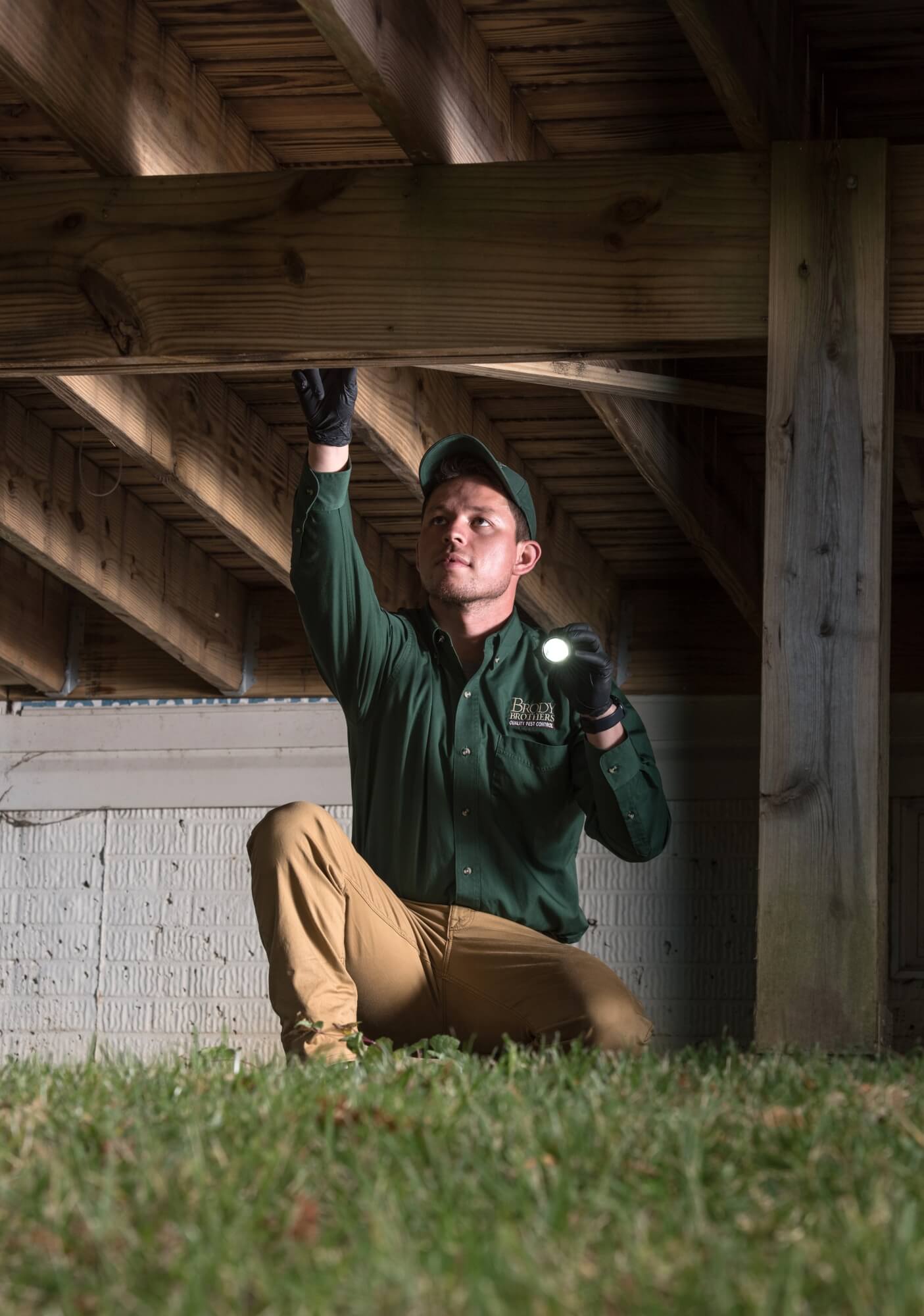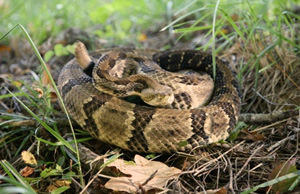The timber rattlesnake is one of two poisonous snakes in the state of Maryland, and it’s the only one with a rattle.It has a painful and dangerous bite, so you should seek medical help if you’re bitten.
Timber rattlesnakes bites are rare because the snakes live only in western Maryland in upland forested areas with rocky outcrops. Plus, timber rattlesnakes are shy and prefer to hide rather than confront people. They will defend themselves, though, if they feel threatened. Their fangs are long enough to penetrate pants and boots, so it’s important to be careful if you encounter these creatures.
You can spot a timber rattlesnake by looking for:
- A triangular and flattened head
- Facial pits between eye and nostril
- Brown to black chevron pattern over yellow, gray or black back
- A snake that’s between 36 and 60 inches long


Timber rattlesnakes like warm weather, and to avoid the cold, they hibernate from October through late April, often sleeping with dozens of other snakes. They like dens on south-facing slopes that catch the sun and will sometimes come out to bask on the rocks on warm days.
The mating season of timber rattlesnakes in Maryland extends from mid-summer through October. The eggs are fertilized inside the female, and she carries them during the winter. The female can also store male sperm during the winter and use it to fertilize her eggs when she ovulates in the spring.
A timber rattlesnake gives birth to 6 to 10 young in the spring and nurtures them with her for the first week of their life. Females can reproduce only two or three times during their lifetime, which can last 20 years.
Timber rattlesnakes have a varied diet of:
- Mice
- Rats
- Squirrels
- Rabbits
- Small birds
- Amphibians
- Other snakes
Some researches believe timber rattlesnakes are helping to control Lyme disease because of the amount of mice they consume. They estimate that a timber rattlesnake can eat between 2,500 and 4,500 ticks annually while consuming mice that carry deer ticks.

As a Home Protection Plan customer, if you’re not satisfied with our pest control service, we will service your home at no additional cost until your issue is solved or receive your money back from your last scheduled service.

If you think a timber rattlesnake may be in your yard, contact one of the experts at Brody Brothers immediately. These snakes can potentially be very dangerous, and they aren’t something you should try to remove on your own.
Our team is highly trained on the proper snake removal process and we can safely eliminate them from your space.
As soon as you notice a snake in your yard, call in the experts of Brody Brothers Pest Control at 410-653-2121 or contact us online to investigate and safely remove them.


